The views expressed in our content reflect individual perspectives and do not represent the authoritative views of the Baha'i Faith.
In choosing the Indigenous messengers of God we’ve written about in this series, we looked for the kind of higher moral code the Baha’i teachings define as the fundamental intentions and ideas of religion:
… things spiritual, and such as are connected with pure hearts; that their true and essential principles were to reform the morals and beautify the conduct of the human race …
RELATED: Does Progressive Revelation Includes Indigenous Messengers of God?
That resonant description, from Abdu’l-Baha’s book A Traveller’s Narrative, beautifully defines the essence of every true spiritual pathway taught by a divine messenger.
Of course, the two of us are in no position to pass judgment over the authenticity of each of these Indigenous wisdom teachers and culture bearers.
We have tried our best to use the most authentic sources available, and have learned from those sources that a new moral code is associated with each of these messengers. Religion, after all, is the most potent source of morality and, more broadly, spiritual awareness and life on the planet. As true for world religions that have emerged from the Middle East and greater Asia, so also for the Indigenous religions that have appeared all across the Americas.
Q: Kevin, you have often pointed out that the Western Hemisphere is as important as the Eastern Hemisphere (which includes much of Europe, Africa, Asia, Australia, and the islands of Oceania). According to National Geographic:
The idea of Eastern and Western hemispheres has become politically and historically significant since European nations began colonizing North America and South America. In this context, the Eastern Hemisphere is sometimes called the “Old World,” and the Western Hemisphere is called the “New World.” However, the Western Hemisphere is a purely geographic term and should not be confused with other mentions of the “western” world, which is often used to describe parts of Europe, North America and other world regions that share some economic, social, and cultural values.
What are your thoughts along these lines?
A: Patricia Locke, my mother, had a passion for researching the Indigenous messengers of God. This lifelong interest became turbocharged after she became a Baha’i in her later years. Now it is our privilege to carry forward and advance her groundbreaking work. So much was lost during the “American Holocaust” (see American Holocaust: The Conquest of the New World, by David E. Stannard) — and the ensuing campaigns of repression and extermination wrought by the dominant culture — that we may never achieve an exhaustive list.
So far, however, we have brought some information to light, and are doing our best to do more.
The boundaries of the hemispheres are a matter of perspective. During the mid-1990’s, my mother and I accompanied some venerable Maori elders on a pilgrimage to the site on the North Island of Ao Tea Roa (New Zealand) where the first seven waka (traditional boats) made landfall. Although these elders were very much my mothers’ senior in age and traditional standing, yet they all referred to Patricia Locke as “grandmother.” When she asked them why they explained that the Maori believe that they are the last God-ordained migratory wave of humanity that pulsated out from the heart of creation and why they regard both the Indigenous peoples from the Americas and Australia as mankind’s ancestral stock. From that exchange, I concluded that, from a Polynesian perspective, the hemispheric boundaries necessarily would include Oceania and Australasia.
Q: Fascinating, Kevin – thank you. In his pioneering work, Voices of Earth and Sky, Baha’i naturalist and anthropologist Vinson Brown, wrote the following, in part, about “Ipeorkun”:
The Cuna Indians of Eastern Panama (part of whom are called the San Blas) have a similar legend of a great culture hero. His name was Ipeorkun Kunkilel, the name pronounced so much like the name Ulikron as to be thought of as simply the Cuna translation of the name of the same person. He was also called “the Golden One descended from the sun,” who taught the people how to heal the sick, to develop the powers of a wise seer, to follow a high moral law, and to know about a beautiful heaven where the good would go. He lived on earth about fifty years, the Cuna say, and also taught hospitality, kindness and helpfulness to one another, and especially to the aged, the widows and the orphans, as part of the way to serve God.
Vinson Brown, uncharacteristically, does not cite his source(s) of information, so we have to look elsewhere. The best sources, of course, are in Spanish, as expected. However, the most often cited source in English, according to the anthropological literature that I consulted, is the following article: Clyde Keeler’s “Ipeorkun, Cultural Hero of San Blas,” in a 1955 edition of Panama Magazine.
After reading it, I can definitely establish that the Panama Magazine article was Brown’s source of information on Ipeorkun. A later, and possibly better source may be Tomás Herrera Porras, Cuna Cosmology: Legends from Panama, published four years after Voices of Earth and Sky first came out in 1974.
Kevin, from your extensive travel experiences, what have you come to learn about the “Guna” (as they are now called, a.k.a. Cuna, Kuna), and their initial attraction to the Baha’i Faith?
A: Chris, I have been blessed to visit Kuna Yala (“Kuna Land”) on several occasions. The Kuna are a highly organized, sovereign, independent people who have a divinely ordained system of governance. Their island villages are immaculately clean and tidy. They seem to have the perfect subsistence balance between land and sea. The islands where the villages are located are close enough to the mainland that there is a constant stream of handmade, hand-propelled boats going back and forth, from tending the mainland fields and transporting the fresh produce back to their island homes. They also have an abundance of seafood resources.
Artistic expression reveals much about a people, and one can see from Kuna traditional music and dance that there is a perfect gender balance in their highly synchronized, complex, and graceful dances.
Tellingly, the Kuna attribute every blessing in their way of life to divine intervention and guidance from God’s Indigenous messengers.
Q: Kevin, years ago, I first learned about the Cuna from this 1971 article in Baha’i News:
More About the Cunas
The Cuna Indians who reside on the San Blas Islands, off the Atlantic coast of Panama, have a prophetic heritage which includes a promise that God will send people to them from the outside world with a new Book, a new Message and a new Name and that the Message will teach them to live in harmony with all the people of the world. The Cuna word for God is Baha.
Nine years ago the Baha’is from Panama traveled throughout the islands and, at that time, over 2,000 Cunas accepted the [Baha’i] Cause. They have, since that time, had little opportunity to deepen in their knowledge of the Faith.
Recently a teaching team visited the island of Ustupo, spending four days with the Cunas. During this time the Sahilas (chiefs) of the island accepted the Cause, as did the Voceros (spokesmen). That the Sahilas embraced the Faith is highly significant, as they have previously treated any visitors who spoke of religion with courtesy but have refused to align themselves with any religion.
RELATED: Baha’u’llah as the Return of Ulikron, Panama’s Indigenous Messenger
Here, I think that the Guna/Kuna/Cuna name of their high god, “Baba,” was somehow transposed into the similar-sounding name, “Baha.” According to Atencio Lopez, who wrote The Kuna of Panama: Building Political Autonomy Through Maintaining Ancestral Knowledge and the Traditional Economy, Ibeorgun is universally recognized and revered as the Indigenous messenger of God who founded the Guna culture and social order:
The Congress — the central decision-making and administrative body of the Kuna people — is organized to uphold the principle of self-determination. It dates back to time immemorial, having been established by Ibeorgun, the Kuna prophet who is also sometimes called Orgun, who taught the Kuna to live together as a people through the Onmaked Nega or House of Congress. Ibeorgun was the first to foretell the arrival of the great nelegan, the group of Kuna prophets, and is considered to be the father of Kuna culture. Ibeorgun consolidated Kuna culture and organized the entire socio-political structure of the people. …
According to Kuna tradition, when he first came to the village, Ibeorgun began to greet the elders. The manner of his greeting was the first of Ibeorgun’s teachings to them. Prior to his arrival, the elders did not know how to greet each other. Then Ibeorgun began to speak of his origins and of his presence, thereby showing us that his next teaching related to Baba (Supreme Being). The basis of Kuna oral history is the Bab Igala and the entire Kuna oral tradition revolves around Baba, who is the pillar that upholds the Kuna cosmos.
In light of this statement, what are your thoughts on the future prospects of Baha’i-inspired and initiated community building endeavors among the Indigenous peoples of the Americas?
A: Currently the majority of the Baha’i community of Panama is Indigenous, predominantly Ngöbe. They are among the most advanced in the world in terms of the Baha’i-inspired “Institute Process” (of service learning) and spiritualization as a people. With that in mind, it is easy to visualize the spark of faith growing and spreading throughout the region, including Kuna Yala.


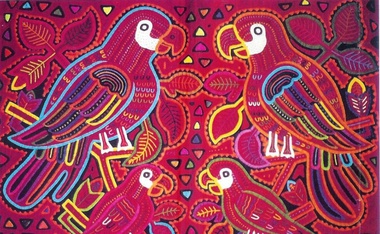
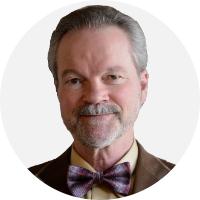
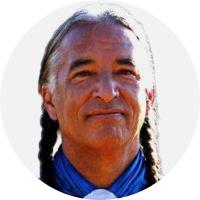
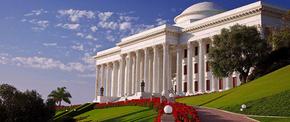
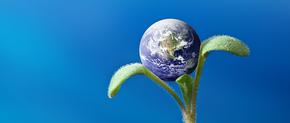




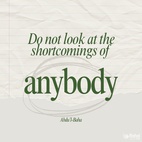
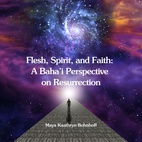
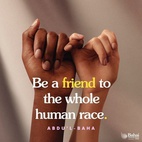
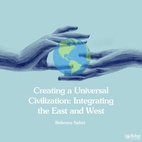
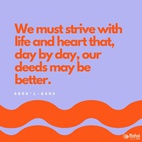

Comments
Sign in or create an account
Continue with Googleor